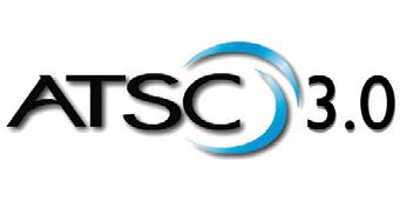Weigel Rolls Out Chicago 3.0 To Test Next-Gen TV
CHICAGO—Weigel Broadcasting earlier this month launched ATSC 3.0 operation in the Windy City under an experimental license from the FCC.
Transmitting on UHF Channel 23, Chicago 3.0 began on-air operations Sept. 9 from the Willis Tower in downtown Chicago. Overall, the goal Weigel has set for the Next-Gen TV test is to explore the capabilities of 3.0 and the business opportunities it enables.
However, Weigel sees its core task as being able to create a PLP (physical layer pipe) that at a minimum can deliver performance equivalent to today’s ATSC 1.0 service in the dense Chicago urban environment where multipath abounds, said Kyle Walker, Weigel VP of Technology.

Establishing this baseline 3.0 TV service is an essential first step to future Next-Gen operations. Doing so will allow Weigel to determine how much bandwidth will be left over for development of new businesses. It will also ensure that viewers can continue to receive an over-the-air signal that’s comparable to today’s ATSC 1.0 service (although interlaced is not an option in 3.0).
“We need to have something that will work, not something where an engineer is coaching a viewer over the phone on how to tweak their antenna,” said Walker.
Weigel has recruited a number of vendor partners to help with the test, including Rohde & Schwarz (transmitter), Harmonic (HEVC encoder), Triveni Digital (signaling, announcement and monitoring), Enensys (IP gateway), Alive Telecom (antenna), and Sony Electronics (3.0 receivers and televisions), said Walker.
Currently, Weigel is transmitter a test clip as a 3.0 signal from an Alive Telecom antenna at a height of 1.572 feet. The antenna supports variable elliptical polarization with up to 50 percent vertical. Effective radiated power is 55kW.
Get the TV Tech Newsletter
The professional video industry's #1 source for news, trends and product and tech information. Sign up below.
While Walker is confident the OFDM-based 3.0 signal will be eminently receivable in the concrete canyons of downtown Chicago where multipath is the rule not the exception, finding the right MODCOD settings to preserve today’s perceived threshold of service will give Weigel first hand proof that 3.0 performs as promised in the real-world.
“A lot of the opportunities you hear talked about regarding 3.0 oftentimes assume starting with a clean slate,” he said. However, broadcasters will be introducing 3.0 service into the exact opposite –an RF environment that’s even more tightly packed than what’s been in play for more than a decade of 1.0 service.
Weigel -- a family-owned media company that owns TV stations in Los Angeles, Chicago and Seattle and other markets -- has some 400 television station affiliates that broadcast its Diginets, which include MeTV, the Movies! Network, DECADES Network, H&I Network and Start TV.
The Chicago 3.0 experimental broadcast, scheduled to go on for at least one year, will give Weigel the experience to help other broadcasters if asked, said Evan Fieldman, head of digital strategy for Weigel.
“We are really taking an objective approach to 3.0 testing,” he said. “Our affiliate partners sometimes reach out to us for objective insight and thought leadership on developments in the broadcast industry,” he said. “We look forward to sharing our findings on 3.0.”
For a comprehensive list of TV Technology’s ATSC 3.0 coverage, see our ATSC3 silo.
Phil Kurz is a contributing editor to TV Tech. He has written about TV and video technology for more than 30 years and served as editor of three leading industry magazines. He earned a Bachelor of Journalism and a Master’s Degree in Journalism from the University of Missouri-Columbia School of Journalism.

